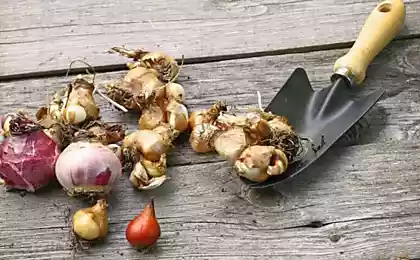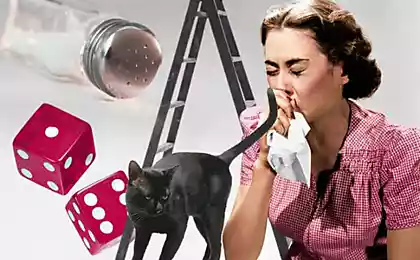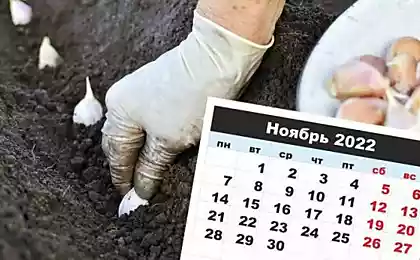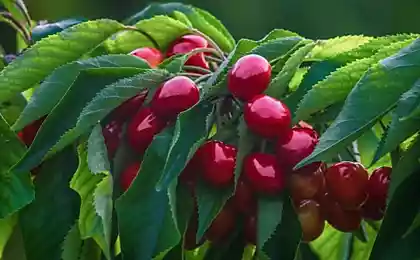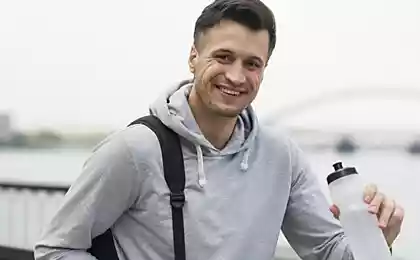185
Why some trees should not be planted near the house and what the consequences may be
If you don't already know, What kind of tree is there? It is not recommended to sit at all, then this material will definitely be useful to you. The fact is that many summer residents and not only, do not pay this issue due attention. They sit on their site, create “coziness, peace and the shadow side”, and then they are surprised when they find out what they really did. I would like to fix it, but trees are not weeds. It's not easy to uproot. Well, the problems from them will be more global than from ordinary weeds.
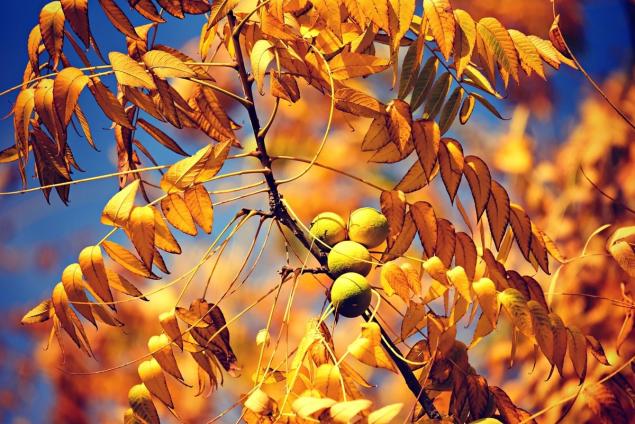
Folk beliefs have long touched upon the theme of the inadmissibility of some plants near human housing. Oak, poplar, tuya and others – all of them, one way or another, attract misfortune on the head of those who planted them near their home. However, we would like to examine this point from the point of view of logic and science. And believe me, we really have something to tell you!
Despite its beauty and benefits, a walnut growing right near the house is more a bad sign than a good one. Many, especially children, like the close proximity to a delicious treat. And adults prefer to sit in the shade of a tree with large fleshy leaves, perfectly protecting from the summer heat. It would seem that you plant a nut near the porch and the matter is in the hat. Convenient and practical. But in fact, there are some nuances in this picture. We'll talk about them today.
Root system The adult tree is too powerful and developed. And it only gets stronger over the years. Accordingly, it can easily destroy nearby communications and paths. Even damage the foundation of a private house. And if you live in a village and you have a barn near a nut, we have bad news for you. One day, your building may just fall apart like a house of cards. Especially if the nut has already turned ten years old.
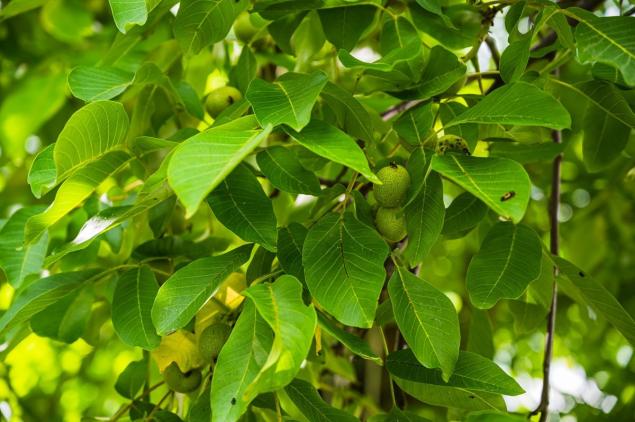
In the bark, the roots and most of all in the leaves of the nut, there is one special substance, juglon. The first feature of Yuglon is that it is inherently a pigment. People use it as an ink or dye for fabric. It's especially good for them to stain cotton. But Yuglon is also a very strong natural herbicide. And it becomes so only after getting directly into the soil. That is why under a pile of nut leaves, in the vast majority of cases, nothing ever grows.
So if you decide to make a small flowerbed near the house, and a nut will grow next to it - get ready for Sisyphus' work and a lot of disappointments. Definitely do not get along with such a neighbor tomatoes, potatoes, crocus, cabbage, oak, pine, apple tree, peas and thyme. Beans, beets, artichoke, cherries and currants are neutral to nuts. Interestingly, juglon, located in the nut, is favorable for germination of melon seeds. So if you have such a need, try to grow juicy melon right near the house, probably worth it.
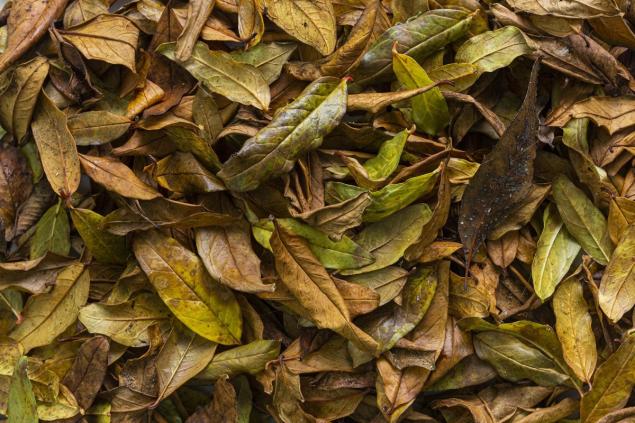
In addition to biochemicals, the nut also has a large thickness. crownIt casts a shadow over everything. It is logical that sun-loving weak plants will not be able to survive in such conditions. From now on, the windows of your house will be in the shade. Whether it is good or bad is up to you. And do not forget about the nuts themselves, falling, from time to time, to the ground. If there are cars near your house, of course, a couple of fruits will fall on the roof. And don’t be surprised by the active neighborhood of crows, who love to feast on walnut kernels and shout loudly under the windows all day long.
In general, if you are well prepared for all the above points, so be it, with nuts can coexist normally. But is this closeness of candles worth it? It's a rhetorical question. Also, don't relax. A nut is just one, even if it is a very unsafe tree. And there are others. For one reason or another, it is also undesirable to plant them near the house or in the dacha. And here are some examples.
Unwanted adopters Lipa In general, the tree is very pleasant and useful. In summer it blooms and gives off a delicate aroma. Also, from dried lime color, you can brew delicious tea, which has a beneficial effect on the human body. But the root system of the linden, like that of the nut, is too aggressive. The same problem with ground objects on the site or in the yard. And also, during the flowering of linden, it secretes sticky juice on which hordes of ants and all sorts of other boobs run. Not that it is dangerous, but on the bench under such a “syrup” rain for a long time you will not sit.
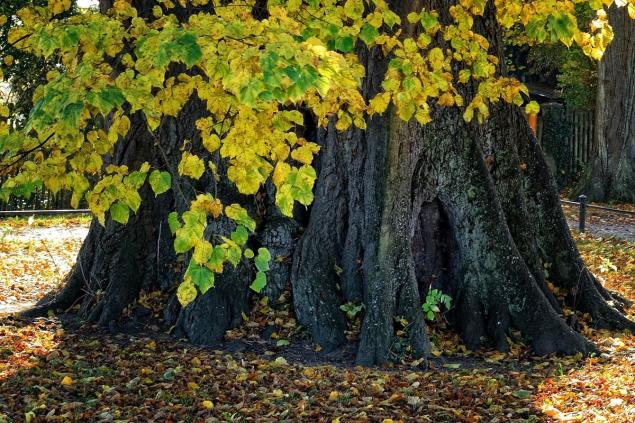
crohn beechLike its root system, one repeats the situation with the nut. Stunted plants in the neighborhood simply will not be able to develop normally. But in symbiosis, it creates a new problem. Roots often try to climb to the surface of the ground. And thick foliage does not feed enough to loosen the ground. The rainwater stagnates and a moist atmosphere remains near the beech trunk. This leads to the creation of all conditions for the development of fungus and mold. And if the beech is near the house, mold can start inside the building itself.
And the arrival of July threatens everyone who lives nearby. poplar, "beautiful" mood and "excellent" health. Allergists are afraid of this tree like fire. And even if the owners of the house at all may not have any claims to poplar down, then their guests, in fact, such immunity may not be. We will not even mention how fast the roots of the poplar grow and what is fraught with it. I already said above. But what might be unsafe about this tree is its trunk. It also grows and develops rapidly. But inside it is quite fragile and almost hollow. It can be broken by any extra wind. And who knows where he will fall, God forbid, when he breaks down? Maybe on the roof of the house, and can get and unsuccessfully parked at the house car.
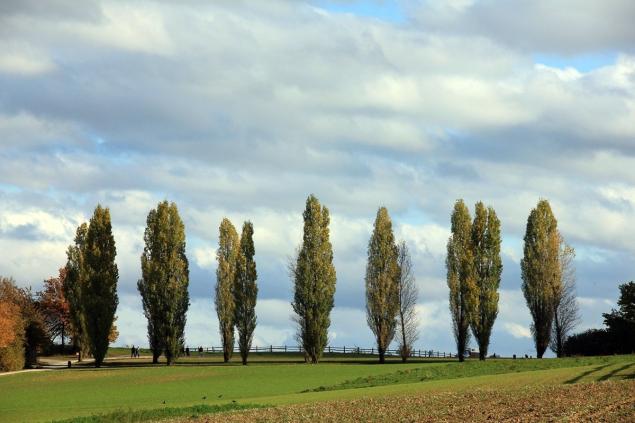
birch With his voracious roots, he will dry everything around. So planting some plants near her is just a waste of time. Or you have a nice well nearby that you will run to every day. Either you have a problem area with swampy or just wet terrain. Then the birch will really come in handy. I'll have to wait until it grows to the right size.
And in the end, we do not recommend to start near the house. cypress. The fact is that its needles quite actively fall out and then grow back. Then, carried away by the wind, it clogs the gutters, which in itself is not good and often leads to problems with drainage. And yet, if this needle is not removed, in some places and areas it will begin to dry. And when the temperature becomes high enough in the summer, the fire will not be long in coming. Needles flare up and burn no worse than hay.

So it is better to think carefully before planting any trees in the immediate vicinity of your home. We gave you some examples. And the rest can tell consultants in the store for gardeners and summer residents. Try to think about the location as carefully as possible before planting any of the plants, considering all possible consequences for the house and garden. And then you limit yourself to a lot of problems in the future. Good luck!

Folk beliefs have long touched upon the theme of the inadmissibility of some plants near human housing. Oak, poplar, tuya and others – all of them, one way or another, attract misfortune on the head of those who planted them near their home. However, we would like to examine this point from the point of view of logic and science. And believe me, we really have something to tell you!
Despite its beauty and benefits, a walnut growing right near the house is more a bad sign than a good one. Many, especially children, like the close proximity to a delicious treat. And adults prefer to sit in the shade of a tree with large fleshy leaves, perfectly protecting from the summer heat. It would seem that you plant a nut near the porch and the matter is in the hat. Convenient and practical. But in fact, there are some nuances in this picture. We'll talk about them today.
Root system The adult tree is too powerful and developed. And it only gets stronger over the years. Accordingly, it can easily destroy nearby communications and paths. Even damage the foundation of a private house. And if you live in a village and you have a barn near a nut, we have bad news for you. One day, your building may just fall apart like a house of cards. Especially if the nut has already turned ten years old.

In the bark, the roots and most of all in the leaves of the nut, there is one special substance, juglon. The first feature of Yuglon is that it is inherently a pigment. People use it as an ink or dye for fabric. It's especially good for them to stain cotton. But Yuglon is also a very strong natural herbicide. And it becomes so only after getting directly into the soil. That is why under a pile of nut leaves, in the vast majority of cases, nothing ever grows.
So if you decide to make a small flowerbed near the house, and a nut will grow next to it - get ready for Sisyphus' work and a lot of disappointments. Definitely do not get along with such a neighbor tomatoes, potatoes, crocus, cabbage, oak, pine, apple tree, peas and thyme. Beans, beets, artichoke, cherries and currants are neutral to nuts. Interestingly, juglon, located in the nut, is favorable for germination of melon seeds. So if you have such a need, try to grow juicy melon right near the house, probably worth it.

In addition to biochemicals, the nut also has a large thickness. crownIt casts a shadow over everything. It is logical that sun-loving weak plants will not be able to survive in such conditions. From now on, the windows of your house will be in the shade. Whether it is good or bad is up to you. And do not forget about the nuts themselves, falling, from time to time, to the ground. If there are cars near your house, of course, a couple of fruits will fall on the roof. And don’t be surprised by the active neighborhood of crows, who love to feast on walnut kernels and shout loudly under the windows all day long.
In general, if you are well prepared for all the above points, so be it, with nuts can coexist normally. But is this closeness of candles worth it? It's a rhetorical question. Also, don't relax. A nut is just one, even if it is a very unsafe tree. And there are others. For one reason or another, it is also undesirable to plant them near the house or in the dacha. And here are some examples.
Unwanted adopters Lipa In general, the tree is very pleasant and useful. In summer it blooms and gives off a delicate aroma. Also, from dried lime color, you can brew delicious tea, which has a beneficial effect on the human body. But the root system of the linden, like that of the nut, is too aggressive. The same problem with ground objects on the site or in the yard. And also, during the flowering of linden, it secretes sticky juice on which hordes of ants and all sorts of other boobs run. Not that it is dangerous, but on the bench under such a “syrup” rain for a long time you will not sit.

crohn beechLike its root system, one repeats the situation with the nut. Stunted plants in the neighborhood simply will not be able to develop normally. But in symbiosis, it creates a new problem. Roots often try to climb to the surface of the ground. And thick foliage does not feed enough to loosen the ground. The rainwater stagnates and a moist atmosphere remains near the beech trunk. This leads to the creation of all conditions for the development of fungus and mold. And if the beech is near the house, mold can start inside the building itself.
And the arrival of July threatens everyone who lives nearby. poplar, "beautiful" mood and "excellent" health. Allergists are afraid of this tree like fire. And even if the owners of the house at all may not have any claims to poplar down, then their guests, in fact, such immunity may not be. We will not even mention how fast the roots of the poplar grow and what is fraught with it. I already said above. But what might be unsafe about this tree is its trunk. It also grows and develops rapidly. But inside it is quite fragile and almost hollow. It can be broken by any extra wind. And who knows where he will fall, God forbid, when he breaks down? Maybe on the roof of the house, and can get and unsuccessfully parked at the house car.

birch With his voracious roots, he will dry everything around. So planting some plants near her is just a waste of time. Or you have a nice well nearby that you will run to every day. Either you have a problem area with swampy or just wet terrain. Then the birch will really come in handy. I'll have to wait until it grows to the right size.
And in the end, we do not recommend to start near the house. cypress. The fact is that its needles quite actively fall out and then grow back. Then, carried away by the wind, it clogs the gutters, which in itself is not good and often leads to problems with drainage. And yet, if this needle is not removed, in some places and areas it will begin to dry. And when the temperature becomes high enough in the summer, the fire will not be long in coming. Needles flare up and burn no worse than hay.

So it is better to think carefully before planting any trees in the immediate vicinity of your home. We gave you some examples. And the rest can tell consultants in the store for gardeners and summer residents. Try to think about the location as carefully as possible before planting any of the plants, considering all possible consequences for the house and garden. And then you limit yourself to a lot of problems in the future. Good luck!
Consultation with a pulmonologist: Taking care of your breathing
While our apartment was being renovated, we decided to stay with my husband’s parents, but soon I regretted it.

